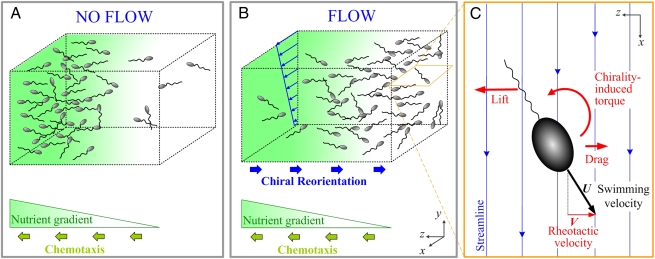Fig. 1.
Bacterial chemotaxis and rheotaxis. (A) Many bacteria can climb chemical gradients by chemotaxis, for example to seek high nutrient concentrations. (B) Ambient velocity gradients can also affect motility, potentially hampering chemotaxis by orienting bacteria away from nutrient sources. The x–y plane is the flow gradient plane, defined by the direction of the flow (x) and the direction of the flow velocity gradient (y). (C) The mechanism responsible for bacterial rheotaxis, shown for a cell with a left-handed flagellum. The chirality of the flagellum causes a lift force along +z. This force is opposed by the drag on the cell body, producing a torque on the cell. This torque reorients the bacterium, which therefore has a component V of its swimming velocity U directed along –z. V is the rheotactic velocity.

